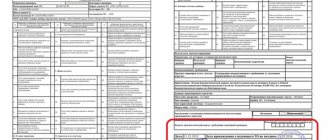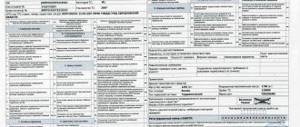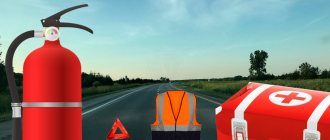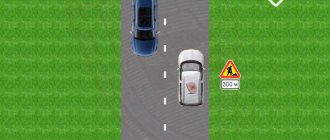New rules for conducting technical inspections in 2021 came into force on February 22. Thus, government decree No. 148 of 02/12/2018 “On amendments to the Rules for technical inspection of vehicles” .
In particular, the regulations for its conduct were changed, and the requirements for the technical condition and equipment of vehicles of various categories changed. It was decided to make amendments due to numerous complaints about the technical inspection system in force until that moment.
In addition, the new rules fully comply with the provisions of the technical regulations of the Customs Union.
Background and possible prospects
Fundamental changes to the previous technical inspection system occurred in 2012. The new regulations provided for the possibility of undergoing maintenance, including in numerous private structures that have the appropriate equipment, the necessary specialists and accreditation. Instead of maintenance tickets, diagnostic cards certified by the organization's seal began to be issued.
Almost immediately, the weaknesses of this scheme were identified. Most often, they were associated with the low quality of work of private vehicle inspection points and the low degree of control of their activities by government agencies. It is no secret that a diagnostic card was often obtained without undergoing a technical inspection of the vehicle at all, simply by paying for it according to the tariff . Therefore, various proposals began to come in to improve it.
In 2021, the Ministry of Internal Affairs proposed to introduce a number of measures aimed at strengthening control over the maintenance process. In particular, it was planned to transfer the functions of accreditation of organizations conducting technical inspections from divisions of the RSA (Russian Union of Auto Insurers) to the Federal Accreditation Service with the right to conduct unscheduled inspections of persons already involved in the work. But these proposals were never implemented.
Since the beginning of 2021, one of the divisions of the Ministry of Economic Development of the Russian Federation has been involved in the development of changes to the procedure for conducting technical inspection of transport. So, in particular:
- a bill was developed and submitted for consideration , providing for mandatory photo or video recording of the maintenance process.
- it was proposed to oblige RSA to maintain a “Unified Automated Technical Inspection System” (USTS).
- It is planned to transfer control over the activities of organizations performing technical inspection of transport to the jurisdiction of RosTransNadzor.
- It is proposed to legalize a fine of 800 rubles for driving a vehicle without passing a technical inspection.
It is proposed to place all responsibility for issuing a diagnostic card with incorrect or false data on the shoulders of the organization that issued it. In such cases, a fine of 10 thousand rubles is provided for this operator, and in case of entering obviously incorrect data into the EAISTO, it is assumed that the responsible persons may be subject to 4 years of forced labor. If these actions lead to serious bodily injury as a result of an accident or vehicle breakdown, it is proposed to increase the punishment for those responsible, up to 4 years in prison.
But so far only changes relating to the technical condition, equipment of vehicles and temporary maintenance regulations have come into force. The remaining proposals are being clarified and finalized.
Inspection in 2021 will be carried out according to new rules
On February 22, 2021, a Government decree came into force, changing the rules for conducting technical inspection. The document made it more difficult for owners of tuned cars to pass control and introduced additional requirements for the condition of cars. What criteria must the vehicle now meet?
Windshield wipers are in place, first aid kit is in the trunk
The changes made by the Cabinet of Ministers' resolution of February 12 to the rules for passing technical inspection can be conditionally divided into two parts - procedural amendments and the introduction of new requirements for the condition of vehicles.
Technical inspection should be returned to the state
From now on, the car will not be able to pass the inspection if it has a “left-handed” tuning. Any improvements, including power bumpers, better known as bumpers, winches or spacers for springs, must now be supported by documents indicating changes to the design of the vehicle. Otherwise, the driver will be denied use of the car.
The same thing will happen if the vehicle’s headlights are tinted or covered with colored films. However, the ban does not apply in cases where the coating is required to correct the light beam - such tricks are mainly used on right-hand drive cars.
Vehicles that do not have windshield wipers or washers will not pass inspection. The use of a vehicle will be prohibited if the power steering provided by the design is missing or deformed. In this case, leakage of fluids from the power steering system is not allowed. The same applies to other assemblies: engine, gearbox, gearboxes, brakes, clutch, air conditioning and cooling system. Although previously it was acceptable to release 20 drops per minute.
Separately, the inspection rules stipulated that studded tires on a car must be installed on all wheels, and not just on the rear or front axle. Previously, it was only about wear and size. In addition, in order to pass control, car owners will need to purchase a car first aid kit - before this, during maintenance they could get by with a warning triangle and a fire extinguisher, although according to traffic rules, the presence of all three elements is mandatory.
Finally, the updated inspection procedure includes checking gas equipment - its location, how it is installed and connected.
Everything has its time
The list of requirements for vehicles undergoing technical inspection has been expanded to 82 parameters. The increase in the list by 15 positions is due to the need to bring the technical regulations in line with the technical regulations of the Customs Union.
The Government Decree changed the requirements not only for passenger cars, but also for other categories of transport. In particular, new inspection rules now apply to forklifts, utility vehicles, tow trucks and tanks.
The increase in the list of checks automatically led to an increase in the time for vehicle inspection, which was reflected in the rules. So, for buses it increased by five to seven minutes. But for passenger cars, the duration of the check remains unchanged, it will take 30 minutes.
In addition, the amendments corrected the form of the diagnostic card, which is issued based on the results of a successful technical inspection. It has been determined that the document is no longer stamped. At the same time, mention of the use of visual inspection methods in technical diagnostics was excluded from the rules.
“The decisions taken will make it possible ... to eliminate changes in the design of vehicles made in violation of legal requirements and to increase the level of road safety,” the Cabinet of Ministers believes.
Long-awaited changes
The new regulation, according to which technical inspection of vehicles is carried out by private companies, and diagnostic cards are issued instead of coupons, came into force in Russia in 2012. Since then, many complaints have been made against the current procedure, including those related to the dishonesty of car services and the poor quality of their work. At the same time, there were also initiatives to improve it.
Thus, in 2021, the Ministry of Internal Affairs proposed to significantly strengthen control over the procedure by transferring the rights to accredit vehicle inspection operators from the Russian Union of Auto Insurers (RUA) to the Federal Accreditation Service. It was planned that this structure would be allowed to carry out scheduled and unscheduled inspections and confirm the competence of accredited persons. The corresponding bill was even posted on the federal Internet portal of draft regulatory legal acts, but the matter did not advance beyond public discussion.
In 2021, the Ministry of Economic Development joined the work on changing the technical inspection procedure. The department discussed a bill providing for mandatory photo and video recording of vehicle inspections. According to officials, this should make the maintenance procedure “fair and absolutely transparent.” In addition, the Ministry of Economic Development proposed to transfer the management of the Unified Automated Information System for Technical Inspection (UAISTO) to RSA.
Don't we need such an inspector?
It was assumed that the bill would be submitted to the Government for consideration in the fall of 2021. However, new details about the contents of the document appeared only in January of this year. It became known that the Ministry of Economic Development still considers it necessary to transfer the EAISTO database to insurers and introduce video recording of cars. At the same time, new items have been added to the old ones. Thus, control over the activities of technical inspection operators is planned to be transferred to Rostransnadzor.
In addition, the department proposes to return a fine of 800 rubles for driving a car without a technical inspection. According to the ministry's plan, liability will also be established for unscrupulous operators. For issuing a diagnostic card to a car owner whose car does not meet the established requirements, they are proposed to be fined 10 thousand rubles. Entering false data into the EAISTO will result in up to four years of forced labor, and if these actions lead to grave consequences, the punishment can be increased to four years in prison.
However, so far the bill that would make changes to the procedure for conducting technical inspection of vehicles has not been submitted to the State Duma for consideration.
Basic provisions on technical condition
The new law on technical inspection affected the following elements of vehicles:
- Headlights and headlight lenses.
- Power steering.
- Windscreen wipers.
- Gas equipment.
- Studded tires.
- First aid kit, fire extinguisher and warning triangle.
- Change of factory design.
- Leakage of working fluids.
Let's look at each of these points in more detail.
Headlights and headlight lenses
The following new requirements have been introduced for headlights and their reflective layer:
- headlights must be the same in size and shape , and their location must be symmetrical;
- the surface of the reflective marking must not have peeling or other damage.
Headlight lenses must be free of clouding, clean and free from damage that would impede the passage of light. It is prohibited to install non-structural elements on headlights, stick films on them or tint them.
This means that cars with tinted, damaged or dirty headlights, or with transparent or decorative stickers will not be able to pass inspection.
Power steering
Amplifiers of all designs (hydraulic boosters, electric boosters, etc.) installed on vehicles by the manufacturer, as well as standard steering dampers, are checked for functionality. They must not have cracks or any deformation of the working elements and body, must be fully operational and operate in accordance with the requirements set out in the technical documentation.
Separately, leakage of working fluid is not allowed in hydraulic boosters.
Windscreen wipers
From February 22, 2018, all windshield wipers and washers installed on a vehicle must be in full working order.
Previously, at least one windshield wiper was allowed to work.
Gas cylinder equipment (GBO)
Elements of the HBO system, as well as its installation and location, must comply with the requirements of clause 9.8 of Appendix No. 8 to the Technical Regulations of the Customs Union 018/2011 .
In short, the equipment must be certified, without changes in design, with a legitimate inspection period for technological indicators. The cylinder must be marked accordingly.
Installation of gas cylinder equipment should be carried out only at a specialized enterprise by certified specialists.
Studded tires
If a car uses studded winter tires, they must be installed on all wheels and have the same design (radial, diagonal, etc.), model, tread pattern, size and wear.
Installing studded tires on only one axle is now prohibited.
Tires must be used in strict accordance with traffic regulations.
First aid kit, fire extinguisher and warning triangle
Now, vehicles must be equipped, in addition to a warning triangle and a fire extinguisher, with a medical first aid kit of the established type. Its contents must not be damaged or expired.
Factory Design Change
From now on, all non-standard elements introduced into the design of the car and not included in the registration certificate will not allow it to pass inspection.
These include, in particular: power bumpers (bumpers), spacers for shock absorbers, additional headlights and lighting, non-standard antennas, etc.
Leakage of working fluids
Dripping or any leakage of oils and other working fluids from the gearbox, engine, gearboxes, steering rack, radiators, batteries, rear axle and air conditioning systems is not allowed.
Previously, leakage of working fluids was allowed up to 20 drops per minute.
In addition, several more points have been added to Appendix No. 1 to the new rules on passing maintenance (there are now 82 of them). Their content reflects additional requirements for vehicles of certain categories, for example, for emergency service vehicles, tow trucks, vehicles with tanks and cargo vans, etc. If necessary, they can be read separately.
Unformulated car modifications
These include:
- Gas equipment
- Change in suspension. For example, lowering, installing welding
- Iron bumper instead of plastic
- A steering wheel or even a seat from another car
All this is illegal, with such changes you will definitely not pass the TECHNICAL INSPECTION. Unless these changes are noted in the registration certificate of the technical device
Besides
The following changes have also been made to the rules of passage:
- The time regulations for technical inspections for certain categories of vehicles have changed (a corresponding table has been developed). Thus, for buses and some types of specialized vehicles it increased, but, for example, for cars of category “B” it remained unchanged.
- The diagnostic card has been modified and received new items that meet the requirements of the new maintenance rules.
Starting from February 22, 2018, all accredited persons must conduct a technical inspection of vehicles in full compliance with the changes that have entered into force.
Winter tires
Well, and lastly, control over winter tires is now being tightened. They should be on all wheels of your car. That is, now you cannot arrive in winter on summer tires, or on winter tires on one axle (let me remind you that studs or Velcro ). Either in the summer or in the winter, this will be monitored.
Well, and of course the technical inspection form will change, where all of the above changes will be made. It is worth mentioning that those (old) cards that you have in your hands do not need to be changed, you will receive new ones only during the subsequent maintenance.
In conclusion, I would like to talk about commercial transport, there are also changes here, although for us they are not so interesting. For example, the inspection time for buses has been increased by 5–7 minutes, and separate standards are appearing for specialized vehicles (such as tank trucks and tow trucks).
Now we are watching the video version of the article
I’ll end with this, I think it was useful, SINCERELY YOURS - AUTOBLOGGER
Similar news
- Hybrid car tax
- Replacing a driver's license when changing your last name
- How to avoid voiding your warranty?











